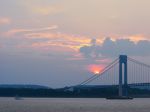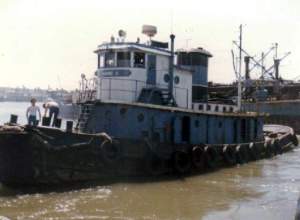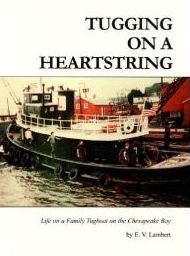
Lower Manhattan remains shrouded in darkness tonight..
We’re waiting for things to open up with precious little hope that it will be any time soon. If the article below is any indication, it’s going to be a while before NY Harbor is moving much product at all.
Excerpts Re-posted without permission;
(Reuters) – full article linked here
REFINERY OPERATIONS
Phillips 66’s 238,000 barrel-per-day Bayway refinery in Linden, New Jersey, has already had its power restored, but a source familiar with plant operations told Reuters on Friday that the plant could be weeks away from restarting, due to heavy damage caused by salt-water flooding.
“A decision regarding when the refinery will be able to resume crude oil processing operations will be made once all assessments are complete,” the company said on its website on Saturday.
Phillips 66 said it had resumed fuel supplies “on a limited basis” from its Linden refined products terminal to wholesale customers late on Friday.
As of Friday, Hess Corp’s nearby 70,000-bpd plant in Port Reading, New Jersey, remained shut down. A company spokesman, Lorrie Hecker, did not report any change early on Saturday but said the company would give an update on operations later in the day.
Hess has used generator power to resume operating Port Reading’s truck rack, and marine operations there have resumed on a limited basis while an assessment of the factory is carried out.
State and federal authorities have been accelerating efforts to remedy fuel shortages. On Friday, the Department of Homeland Security issued a waiver to the Jones Act, allowing foreign oil tankers from the Gulf of Mexico to enter Northeastern ports; Cuomo, New York’s Governor, waived tax regulations on tankers in New York harbor; the Department of Energy lent 2 million gallons of heating fuel from its strategic reserve to the military; the Environmental Protection Agency waived clean diesel requirements in New York City and Pennsylvania. An earlier clean diesel waiver was issued for New Jersey.
Colonial Pipeline, a key oil product supply line to the Northeast, has resumed shipments at 700,000 bpd, or near full capacity.
“Gasoline, diesel fuel, jet fuel and home heating oil are being resupplied, but until customer terminals fully recover, it won’t be at the normal rates. Nevertheless, Colonial’s main pipeline into northern New Jersey is back at full operational capability, bringing nearly 30 million gallons of fuel a day to that region,” the company said on its website.
Buckeye Partners said on Friday its main terminal in Linden was reconnected to its power supply and fully operational by noon on Friday; and Magellan Midstream Partners restored full operations in Delaware and Connecticut.
Below is a list of refineries, fuel pipelines and ports impacted by the storm:
COMPANY PLANT CAPACITY (bpd) STATUS PBF Energy Delaware City, Delaware 190,000 Operations normal. PBF Energy Paulsboro, New Jersey 180,000 Operations normal. Hess Corp Port Reading, New Jersey 70,000 Shut down. Remained without power as of November 2. Truck racks and marine terminal operating on limited basis with generator power. Philadelphia Energy Solutions Philadelphia, Pennsylvania 330,000 Reduced rates. Both crude sections restarted at Point Breeze as of October 31. Company said on November 2 it would be back to normal schedules this weekend after delays in crude deliveries. Monroe Energy Trainer, Pennsylvania 185,000 Operated throughout storm. Back in full service as of November 1 though not at full rates due to maintenance overhaul. Phillips 66 Linden, New Jersey 238,000 Shut down. Could be weeks away from restarting due to heavy damage from salt-water flooding, source familiar said. Phillips 66 says power has been restored, but has not provided timeline for restart. Imperial Oil Ltd Sarnia, Ontario 121,000 Returning to normal service as of October 31 after power outage.
EIA REPORT ON STATUS OF TERMINALS
COMPANY LOCATION CAPACITY STATUS Colonial Pipeline Linden NJ Open 11/3/2012 Hess Groton CT 812,185 Shut 11/3/2012 IMTT Bayonne NJ 16,000,000 Shut; expected to reopen by next week-Macquarie 11/3/2012 Kinder Morgan Carteret NJ Seen ready to begin petroleum product movements in 24-48 hr 11/3/2012 Kinder Morgan Perth Amboy NJ 3,543,388 Seen ready to begin petroleum product movements in 24-48 hr 11/3/2012 Kinder Morgan Philadelphia PA 11,878,462 Open 11/3/2012 Kinder Morgan Staten Island NY 2,959,700 Seen ready to begin petroleum product movements in 24-48 hr 11/3/2012 Magellan Midstream Wilmington DE 2,842,000 Open 11/3/2012 Magellan Midstream New Haven CT 4,000,000 Open 11/3/2012 Motiva Bridgeport CT 1,290,000 Open with reduced operations 11/3/2012 Motiva Brooklyn NY Shut 11/3/2012 Motiva Long Island NY 222,000 Shut 11/3/2012 Motiva Newark NJ 1,113,000 Shut 11/3/2012 Motiva New Haven CT 1,600,000 Open 11/3/2012 Motiva Sewaren NJ 5,000,000 Shut 11/3/2012 Motiva Baltimore MD 1,100,000 Open 11/3/2012 Motiva Fairfax VA 360,000 Open 11/3/2012 Motiva Richmond VA 210,000 Open 11/3/2012 Motiva Providence RI 1,458,000 Open 11/3/2012 NuStar Energy Paulsboro NJ 90,800 Open 11/3/2012 NuStar Energy Linden NJ 2 of 8 truck bays open 11/3/2012 NuStar Energy Virginia Beach VA 40,000 Open 11/3/2012 NuStar Energy Dumfries VA Open 11/3/2012 NuStar Energy Piney Point MD 5,403,000 Open 11/3/2012 NuStar Energy Andrews AFB MD Open 11/3/2012 NuStar Energy Baltimore MD 832,000 Open 11/3/2012 Phillips 66 Riverhead NY Open 11/3/2012 Phillips 66 Tremley Point NJ Shut 11/3/2012 Hess Brooklyn, NY Expected to open soon 11/3/2012
FROM DOE: Global Partners Inwood NY Expected to Restart 11/2 11/3/12 Motiva Long Island NY Shut 11/3/12 Global Partners Newburgh NY Open, Expecting Deliveries 11/3 11/3/12 Global Partners Oyster Bay NY Open 11/3/12 Castle Port Morris Bronx NY Open 11/3/12 Gulf Oil New Haven CT Open 11/3/12 Schildwachter Oil Bronx NY Open 11/3/12 Hess Pennsauken NJ Open 11/3/12
OTHER TERMINALS IN NEW YORK HARBOR AREA
COMPANY LOCATION CAPACITY STATUS BP Products North America, Inc. New York, NY Harbor 53,000 Unknown BP Products North America, Inc. Carteret, NJ 1,445,000 Unknown Buckeye Terminals, LLC New Jersey, NY Harbor 4,000,000 Unknown Carbo Industries, Inc. Long Island, NY 5,900,000 Unknown Castle Port Morris Terminal New York, NY Harbor 846,000 Unknown Center Point Terminal Company New Jersey, NY Harbor 1,018,300 Unknown CITGO Petroleum Corp. Linden, NJ 3,669,250 Unknown Getty Terminals Corp. New Jersey, NY Harbor 1,018,300 Unknown Getty Terminals Corp. Bronx, NY 23,000 Unknown Global Companies, LLC Long Island, NY 104,200 Unknown Global Companies, LLC Long Island, NY 325,700 Unknown Gulf Oil, Limited Partnership Linden, NJ 568,374 Unknown Hess Corporation New York, NY Harbor 533,933 Shut Hess Corporation New York, NY Harbor 646,334 Shut Hess Corporation New Jersey, NY Harbor 5,961,000 Shut Hess Corporation New Jersey, NY Harbor 4,900 Shut Hess Corporation New Jersey, NY Harbor 579,619 Shut Hess Corporation New Jersey, NY Harbor 608,000 Shut Hess Corporation New Jersey, NY Harbor 1,689,000 Shut Kinder Morgan New York, NY Harbor 2,959,700 Unknown Kinder Morgan Liquids Terminals, LLC New Jersey, NY Harbor 7,542,619 Unknown Lorco Petroleum Services New Jersey, NY Harbor 476,190 Unknown Metro Terminals Corp. Brooklyn, NY 207,000 Unknown Motiva Enterprises, LLC New York, NY Harbor 50,000 Unknown Motiva Enterprises, LLC Long Island, NY 222,000 Shut NuStar Energy, LP New Jersey, NY Harbor 4,116,000 Unknown NuStar Energy, LP New Jersey, NY Harbor 340,000 Unknown Sprague Energy Corporation Long Island, NY 80,263 Unknown Sunoco Logistics Partners, LP New Jersey, NY Harbor 505,457 Unknown
PIPELINES, PORTS, TERMINALS, KEY POWER RESTARTS
* Colonial Pipeline, the 825,000-bpd conduit that ships fuel from the Gulf Coast to the East Coast, said it had restarted a large section of Line 3, its Northeast mainline that runs from Greensboro, North Carolina, to Linden, New Jersey, on Thursday. It also resumed deliveries at its key Linden junction to a connected Buckeye terminal.
“While Colonial’s pipelines and facilities were spared significant damage, many of the terminals in the Linden area will require days if not weeks to fully recover,” it said.
* Kinder Morgan Energy Partners, one of a handful of companies operating dozens of oil terminals and storage tanks that are critical links in the supply chain, said it should resume shipments from its New York and New Jersey terminals in the next day or two. Other operators have indicated they should be able to resume shipments as soon as power is restored.
* The storm damaged four diesel storage tanks at Motiva Enterprise’s terminal at Sewaren, New Jersey, and two of them leaked fuel into the Arthur Kill waterway, which separates Staten Island, New York, from New Jersey.
* Royal Dutch Shell said on Thursday that all of its New York borough terminals were still down. Its Shell-branded network was 84 percent open in Connecticut, 47 percent open in New Jersey, 62 percent open in New York and 83 percent open in Pennsylvania.
* NuStar Energy said on Wednesday that its Paulsboro, New Jersey, terminal was back in operation, but that damage assessment showed significant high-water damage to the marine and storage terminal. In Maryland, NuStar’s Piney Point, Andrews AFB and Baltimore terminals were all back in operation, the company said on its website. NuStar said its Virginia Beach terminal was back in operation, as was its Dumfries terminal, also in Virginia.
* Buckeye Partners said its main New York Harbor area terminal in Linden, New Jersey, had been reconnected to its power supply and was fully operational by noon on Friday. As of November 3, Buckeye has restarted all of its operations, according to DOE figures. The company is supplying jet fuel to the three airports in the New York City area.
* Hess Corp’s Port Reading terminal has used generators to resume truck rack operations, and marine operations have continued on a limited basis. Rack operations have also resumed at the company’s Bronx and Roseton, New York, terminals, but operations at the company’s other New York Harbor area terminals remain suspended due to flooding and power outages.
* Phillips 66’s Riverhead Terminal on Long Island has reopened and its Linden, New Jersey, terminal reopened at 2 p.m. on Friday.
(Reporting by Joshua Schneyer, Janet McGurty, Edward McAllister, Selam Gebrekidan and Jonathan Spicer in New York; Editing by Peter Cooney)
 On our last trip down the Hudson it happened that my Chief Mate received an inquiry via VHF as to whether I had shuffled off this mortal coil. My lack of content seemed to indicate that I was no more…
On our last trip down the Hudson it happened that my Chief Mate received an inquiry via VHF as to whether I had shuffled off this mortal coil. My lack of content seemed to indicate that I was no more…










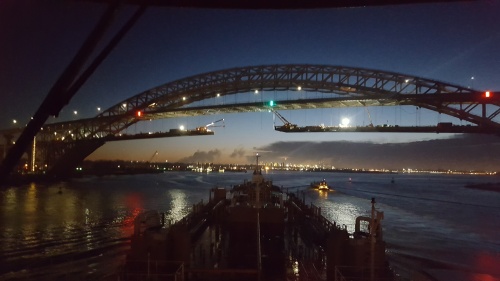




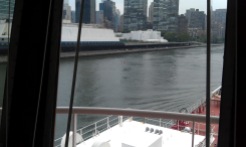









































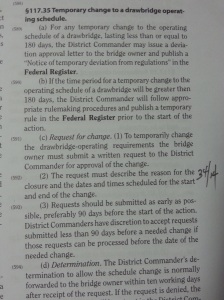

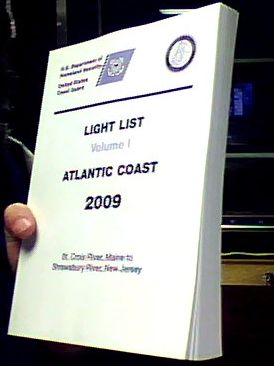



 15 degrees into the current in order to make good my charted course and struggling to make any real speed. Sliding across the Gulf is the rule.
15 degrees into the current in order to make good my charted course and struggling to make any real speed. Sliding across the Gulf is the rule.























































